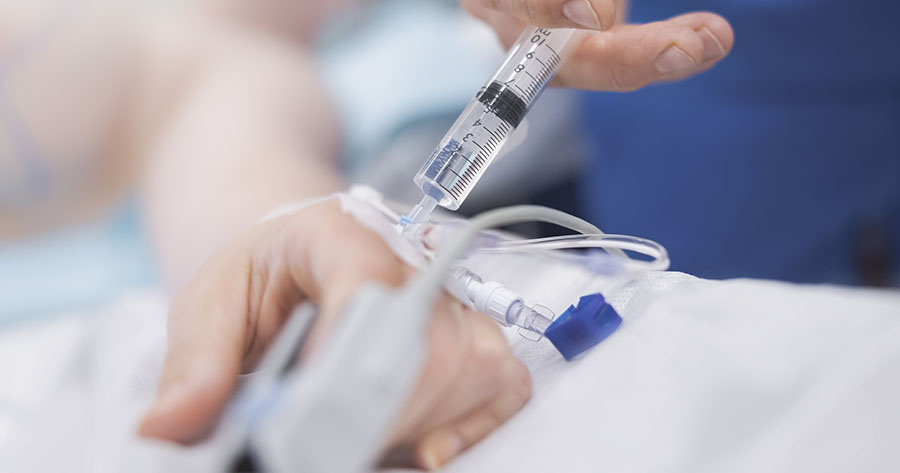We live in a consumer society where our young people appear to be attached to their mobile phones and we, as healthcare professionals, need to be confident and competent in using an increasing range of equipment, education programmes and information technology, such as download systems. February 2016 saw the publication of the NICE diagnostic guidance (NICE, 2016) concerning integrated sensor-augmented pump therapy systems for managing blood glucose levels in type 1 diabetes. This guidance, along with NICE NG18 (NICE, 2015), ensures those who fulfil the criteria can receive NHS funding for continuous glucose monitoring (CGM). But those without an augmented system may not have their CGM funding renewed (NICE, 2016). Some may feel the guidance has limited choice of systems to use, but until there is robust evidence that it improves diabetes control then it is unlikely that it will be offered for all devices. Key recommendations include that the person or their carer:
- Agrees to use the sensors at least 70% of the time.
- Understands how to use it and is physically able to use the system.
- Agrees to use the system while attending a structured education programme on diet and lifestyle, and counselling (NICE, 2016).
There are different levels of usage of CGM. It can be used retrospectively to learn from previous decisions (what worked well/what didn’t), but can also be used pro-actively to make real-time adjustments. The pro-active approach is quite different from the standard model of diabetes management and can take a lot of confidence and practice. Many healthcare professionals may struggle with this approach, but it is our duty to provide our patients with the information, knowledge and confidence to use this expensive treatment to its fullest.
The best example I have come across with this is Sugar Surfing by Ponder and McMahon (2015). It is an excellent read for all healthcare professionals as it describes, in detail, ways to optimise diabetes control by actively using CGMs. Edinburgh Centre for Endocrinology and Diabetes (2016) has recently published an abridged version that could be easily adapted for use by children and their families.
Unfortunately, the new flash glucose monitoring system is currently not available for NHS reimbursement. This puts us in a difficult position as some families cannot afford the monthly outlay. Sampling from the company gives a limited trial and we need to ensure those purchasing this system receive advice on its use and limitations, as it has no alarms.
The most recent National Paediatric Diabetes Audit (NPDA) demonstrated 58.1% of those with type 1 diabetes and 39.7% of those with type 2 were recorded to have received structured education, and a key recommendation is the development of a national programme to reduce variability in care (Royal College of Paediatrics and Child Health [RCPCH], 2016). We need to ensure our families receive structured education and are able to provide evidence of sufficient knowledge and understanding.
Goals of diabetes education (Thornton et al, 2016) is a structured education programme that has been designed to enhance the knowledge, confidence and skills of all children and young people with type 1 diabetes, and contribute to their physical, social and emotional wellbeing. It is being implemented throughout the UK and is endorsed by the National Children and Young People’s Diabetes Network.
Optimisation of diabetes control is a major priority for all those working with children and young people with diabetes. We are all required to have a clinical guideline on how we propose to do this, along with how we will support those with suboptimal control as part of the Diabetes Quality Improvement Network System (DQUINS) peer review process. Teams have just concluded their most recent uploads to the DQUINS site for evaluation, but this must be more than a paper exercise. We must implement its guiding principles into our daily clinical practice.
The recent NPDA had encouraging results. The number of children achieving excellent diabetes control (HbA1c <58 mmol/mol [7.5%]) increased from 15.8% (2012/13) to 23.5% (2014/15). However, there is still wide clinical variance, which teams need to reflect on and they should learn from those in the network who have demonstrated improvements.
Nurses should become familiar with the national audit and its requirements, as they can help children and young people access the necessary checks. All members of the multidisciplinary team should take responsibility for, and checking of, the quality of the data submitted to the audit. This may involve them developing a deep understanding of the nuances of the database they use to ensure information is recorded. These data-quality checks can then ensure the report received truly reflects the care provided in your unit.
Type 2 diabetes is also reported in the NPDA, with 543 young people identified as having type 2 diabetes in 2014/15 (RCPCH, 2016). We also need to develop expertise in the daily management of young people with type 2 diabetes. Within this section, you will find an article that I have written on the type 2 elements in the NG18 guideline (NICE, 2015). The article describes the subtle differences between the management of type 2 and type 1 diabetes. In the second article of the section, Zoe Sherwood explores the literature on the factors influencing diabetes control in children under 11 years with type 1 diabetes. Her findings point to multiple facets that we all need to be familiar with.





The risk factors and what might be done to address them.
24 Mar 2025